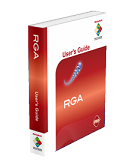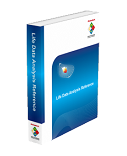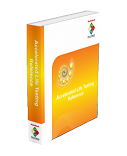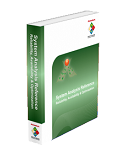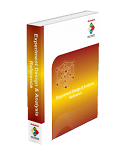RGA Chapter 1: Difference between revisions
| Line 7: | Line 7: | ||
<br> | <br> | ||
<br> | <br> | ||
[[Image:rga1.1.png | [[Image:rga1.1.png|center|200px|]] | ||
<br> | <br> | ||
This book can be used as a reference for RGA or by itself as a reliability growth handbook. It provides examples and sample problems that can be analyzed using ReliaSoft's RGA. When applicable, it also includes the underlying theory and principles, relevant calculations and derivations. | This book can be used as a reference for RGA or by itself as a reliability growth handbook. It provides examples and sample problems that can be analyzed using ReliaSoft's RGA. When applicable, it also includes the underlying theory and principles, relevant calculations and derivations. | ||
Revision as of 23:30, 18 April 2012
Introduction
Foreword
This reference has been designed to introduce you to reliability growth analysis (RGA) concepts and the application of reliability growth models for both developmental testing and fielded repairable system data. It accompanies ReliaSoft's reliability growth analysis software package. Developed in cooperation with Dr. Larry Crow and key development partners in government and industry, ReliaSoft's RGA software provides the tools to set a reliability growth strategy and analyze data from developmental tests. The software also gives the ability to apply reliability growth models for repairable system and fleet analysis, allowing the calculation of optimum overhaul times and other results without the detailed data sets that would normally be required. New and enhanced features in Version 7 include support for Multi-Phase Reliability Growth Analysis, new capabilities for Reliability Growth Planning and Management, Mission Profile Management, Design of Reliability Tests for Repairable Systems and Monte Carlo Simulation.
This book can be used as a reference for RGA or by itself as a reliability growth handbook. It provides examples and sample problems that can be analyzed using ReliaSoft's RGA. When applicable, it also includes the underlying theory and principles, relevant calculations and derivations.
RGA 7 User's Guide
Examples in this reference use ReliaSoft's RGA 7 software. Use of the software is described in-depth in the RGA 7 User's Guide. This reference assumes a familiarity with the software and uses RGA 7 to reinforce and expand on the fundamentals of the analysis.
Additional References
This reference is one in a series of reliability engineering reference works created by ReliaSoft. Some concepts and examples that have been extensively covered in other references, such as ReliaSoft's Life Data Analysis Reference, ReliaSoft's Accelerated Life Testing Reference and/or ReliaSoft's System Reliability Reference, have been omitted from this reference.
Interested readers can obtain these references from ReliaSoft or view this material on-line at www.weibull.com.
Inside This Reference
• Chapter 2 presents an overview of reliability growth.
• Chapter 3 introduces and discusses different reliability growth data types and applicable analysis models.
• Chapter 4 discusses the classic Duane model.
• Chapter 5 discusses the Crow-AMSAA (NHPP) model.
• Chapter 6 discusses the Lloyd-Lipow model.
• Chapter 7 discusses the Standard and Modified Gompertz models.
• Chapter 8 discusses the Logistic model.
• Chapter 9 discusses the Crow Extended model.
• Chapter 10 discusses the Crow Extended - Continuous Evaluation model.
• Chapter 11 discusses the Extended Planning model.
• Chapter 12 discusses the Operational Mission Profile Testing methodology.
• Chapter 13 discusses fielded systems data analysis.
• Chapter 14 discusses additional tools, such as Monte Carlo, SimuMatic, and Design of Reliability Tests for Repairable Systems.
Last Update
The most recent update to this reference reflects changes made to the RGA software up to Compile Release Version (CRV) 7.5.1.


